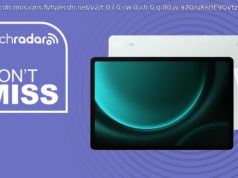For Skype Classic, not the sound of silence
In a week when NASA flung a spacecraft into space to touch the Sun, Microsoft has brought darkness to Windows 10, given Skype Classic a mission extension, and continued its efforts to send SMB1 screaming into the heart of our nearest star.
It was a bumper week for Windows Insiders, as Microsoft emitted new builds for Autumn’s Redstone 5 release of Windows 10 as well a little something for those brave souls tinkering with next year’s version of the operating system. Build 17733 arrived with yet more Dark Mode toys and Redmond proclaiming that “we’ve finished what we set out to do for this release” for File Explorer at least.
Sadly, the rest of Windows 10 hasn’t quite received the same treatment (yes Mail, I’m looking at you) meaning that Dark Mode could well be a jarring experience come Autumn.
A further Redstone 5 build (17735) turned up a couple of days later, with a raft of fixes, along with a parity-bringing build of next year’s Windows 10 in the form of build 18214 .
Now referred to as 19H1 rather than Redstone 6 (although The Register reckons that «Code-a-munga» would be a better name, judging by the size of the thing) the lucky Insiders on Skip Ahead also get access to Your Phone. And now they can also wonder exactly what all the fuss is about.
Microsoft’s efforts to kill off SMB1 continued last week, even though a bunch of legacy platforms (notably Windows XP and Windows Server 2003) still depend on the venerable and vulnerable networking protocol.
To assist admins in working out where the miscreants in their organisations might lie, Redmond has added SMB1 auditing to its Visual Auditing and Security Tool (VAST).
The jumped-up event log viewer allows, via a nifty bit of PowerShell magic, the collation of SMB1 requests. If SMB1 traffic is being flung around the network, this could well be rather a lot of data. Since Project VAST is based on Power BI and Azure Log Analytics, Microsoft reckons it’s just the thing for producing an actionable report of SMB1 offenders.
The endgame is, as ever, to eradicate SMB1. El Reg spoke to Microsoft’s SMB1-hater-in-chief, Ned Pyle, to get his take on the new addition to the VAST toolkit. Pyle replied “It’s awesome”. Obviously.
The much-beloved Classic version of Skype will be left teetering at the edge of its grave for a while longer as Microsoft stepped back from plans to kill off the thing on September 1 .
Users have been encouraged (or beaten with a pointy stick, depending on your perspective) to move to Skype 8. The new version has a few extra bells and whistles, but lacks some features deemed critical by users such as, er, the ability to have multiple conversation windows open at once.
The announcement came in a support forum by a Microsoft representative, confirming that support for Skype Classic (aka version 7) would continue for “some time”. Hardly what one would call a resounding commitment to the aging platform.
Microsoft has also added a UserVoice forum for Skype, allowing users to post ideas for new functionality. In what will have doubtlessly disappointed head honchos at Redmond, and come as no surprise to pretty much everyone else, the number one feature request is “Make it look and work EXACTLY like classic Skype version 7”.
Oh dear.
In one of the more surreal stories of the week, Microsoft announced that its Edge browser had overtaken Chrome. Sadly, however, it was not on Windows 10, but rather in the Android Play Store. And it certainly wasn’t by number of downloads, but rather in terms of ranking.
Head of Program Management at Microsoft Mobility, Vishnu Nath, could scarcely conceal his glee and squeaked out a tweet:
The Edge browser on mobile remains very much a niche player since Microsoft killed off its own mobile platform. Because it is a stand-alone app, it also benefits from updates far more frequently than its bigger desktop brother. It is also key to Redmond’s ongoing efforts to tie the Android and iOS platforms to Windows 10 through the Your Phone app.
However, with downloads of Edge an order of magnitude behind Chrome in the Play Store, the browser has quite some way to go before it matches the ubiquity of Google’s offering.
Microsoft would really, really like you to migrate your. NET Framework and Core applications to Azure, and in that vein has emitted a public preview of Windows Container Support on Azure App Service.
Developers, who may have been reluctant to move to the Azure App Service, can wrap up their apps in containers and take advantage of the inherent isolation boundaries to do all sorts of naughty things that the Azure App Service might otherwise frown on. Microsoft gives the example of PDF generation components hitting graphics device interface APIs.
El Reg pulled on a pair of hefty rubber gloves and had a crack at creating our very own containerized service and found that, as is often the case with previews, the process worked pretty well and our (admittedly very basic) ASP. Net Web Forms app ran up with little difficulty. Performance could, however, charitably be described as «lethargic». But since this is still in preview, we’ll cut it some slack.
Microsoft is also offering some new variants of its Dv3 series VMs with 2,4 or 8 cores and 8GB, 16GB or 32GB respectively. These are aimed specifically at applications deployed using Windows Containers. And yes, you’ll be using Windows Sever 2016 too, with a Core image needed for. NET Framework apps and a Nano image needed for. NET Core. ®
Sponsored: Following Bottomline’s journey to the Hybrid Cloud
Домой
United States
USA — software Hello darkness my old friend, what happened last week in Redmond?






